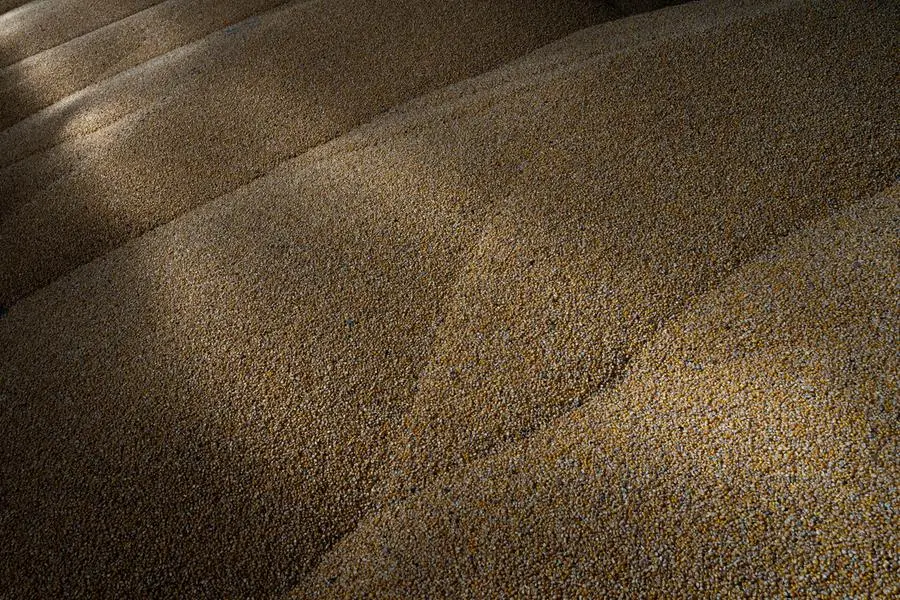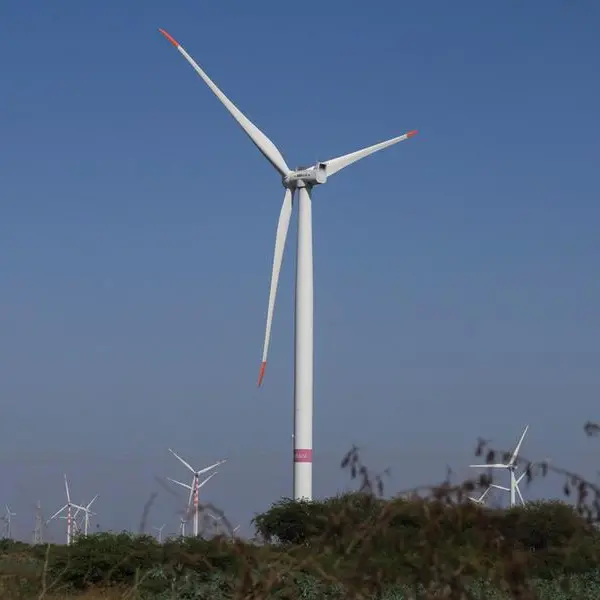PHOTO
FILE PHOTO: Corn kernels are seen inside a storage at a farm in the village of Yerkivtski, as Russia's attack on Ukraine continues, in Kyiv region, Ukraine June 10, 2022. REUTERS/Anna Voitenko/File Photo
(The opinions expressed here are those of the author, a market analyst for Reuters.)
NAPERVILLE, Illinois - Government data on Monday indicated enormous U.S. corn and soybean harvests are on deck, but will those estimates only grow larger, or are they the highest that will be seen this season?
It is often said that big crops tend to get bigger, but the burden of proof can be heavier when the original numbers are already lofty.
The U.S. Department of Agriculture placed 2024 U.S. corn yield at 183.1 bushels per acre and soybeans at 53.2 bpa, both above pre-report trade estimates of 182.1 and 52.5, respectively.
Those analyst guesses were already safely above USDA’s 2024 trendline yields of 181 and 52 bpa, and Monday’s figures, derived through producer surveys and satellite imagery, would be new records.
The August yield estimates in recent years tend to be too aggressive versus the final, albeit with caveats, and the pattern is a bit more consistent for soybeans than corn.
August soybean yield has been higher than the final in six of the last seven years (not 2021), though 2021’s yield was the highest of that group and close to record.
August corn yield has been higher than the final in six of the last nine years (not 2023, 2021 or 2017), but those three years are also the highest-yielding of the bunch.
Those statistics may seem to favor Monday’s numbers going even higher, but it is interesting to note that the August yields for both corn and soy in 2021 and 2023 were below trade estimates, unlike in 2024.
Additionally, the August estimates in those two years were lower than in July, again, unlike 2024.
Finishing weather could guide the direction of the 2024 estimates, and although August rainfall is still uncertain, the lack of yield-clipping heat might offset any future downgrades, especially in corn.
ACREAGE SHIFT
Planted and harvested area were also factors in the U.S. production estimates on Monday, and the final harvested area tends to be lower than in late summer/fall.
This year was the first time USDA’s late summer/fall area adjustment occurred in August, which is now permanent, though it took place in September or October in previous years.
Corn plantings fell by 727,000 acres from the June estimate to 90.75 million acres, though soybeans jumped by an unusual 1 million acres to 87.1 million. Both were expected to decline.
If the soybean area stands, it would be the third time in the last 16 years that final plantings were materially higher than in June. It would also be the first time since 2008 that final soy plantings were higher than in June following an acreage decline between the March and June surveys.
The easing in corn plantings was bigger than expected, especially given the relatively strong increase from March to June. These trends suggest the market and perhaps producers have been overestimating the attractiveness of corn versus soybeans this year.
Harvested area estimates also fell by similar degrees as the plantings on Monday, and those tend to be smaller in the end. Final harvested corn and soybean acres were lower than the autumn adjustments in eight of the last 10 years (not 2014 and 2015 for corn; not 2017 and 2020 for soybeans).
HUGE RECORDS
Some of the numbers published on Monday were eye-popping, most notably a 225 bpa yield for Illinois corn, a record by 11 bpa. Iowa at 209 bpa would best its corn yield record by 5 bpa, though these are not as heavy as it seems.
Illinois in 2014 set a record corn yield of 200 bpa, some 20 bpa above the prior high, and 2004’s record of 180 was 16 bpa above the prior max.
Iowa set back-to-back corn yield records in 2015 and 2016 at 192 and 203 bpa, respectively, and each year represented an increase of 11 bpa over the previous high.
It is unclear where the technological yield ceiling lies, or if it exists, though pegging trend yield increases has recently challenged analysts due to the string of weather interruptions observed in the past several years. Karen Braun is a market analyst for Reuters. Views expressed above are her own.
(Writing by Karen Braun Editing by Matthew Lewis)





















